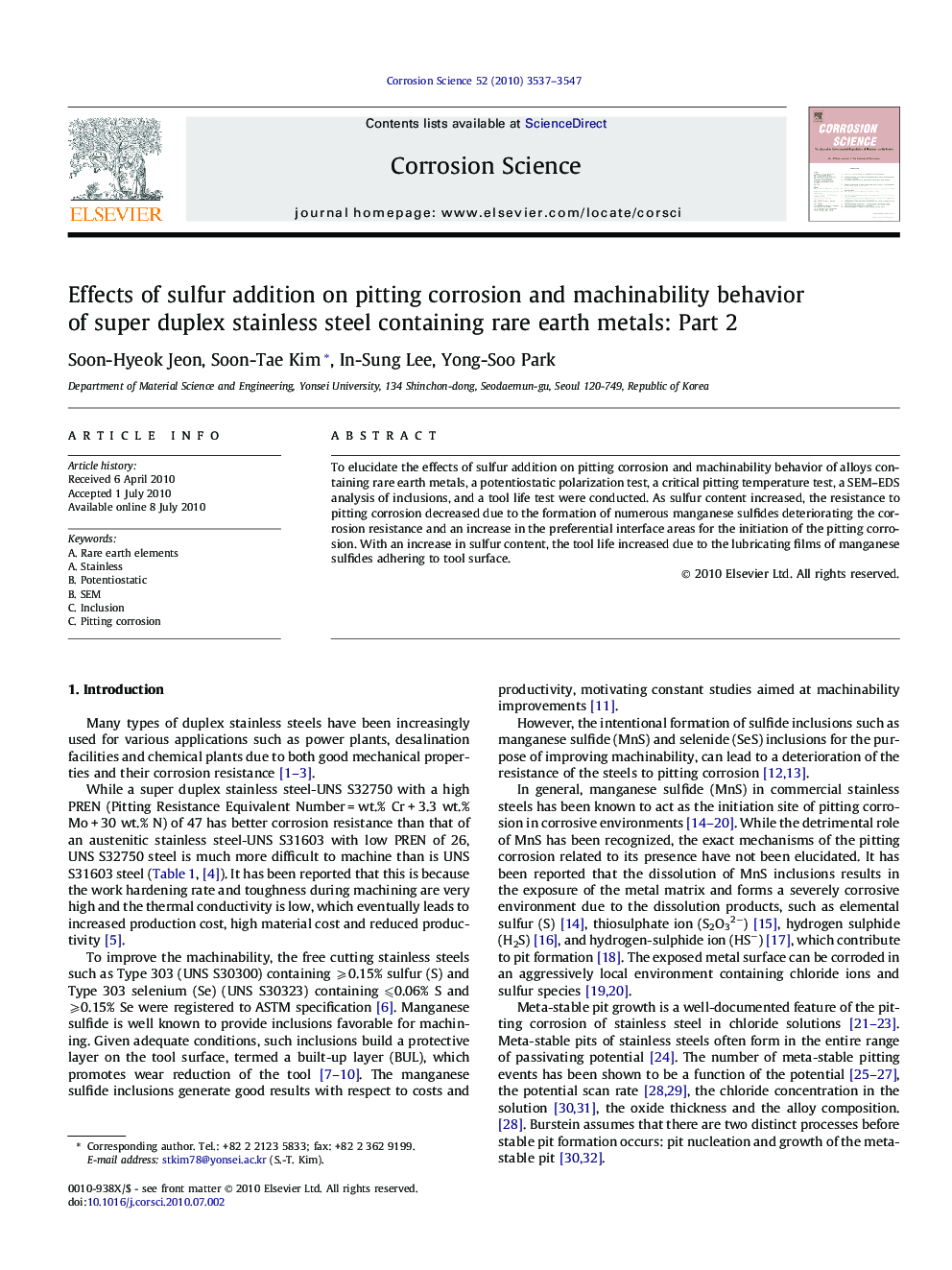| Article ID | Journal | Published Year | Pages | File Type |
|---|---|---|---|---|
| 1470851 | Corrosion Science | 2010 | 11 Pages |
To elucidate the effects of sulfur addition on pitting corrosion and machinability behavior of alloys containing rare earth metals, a potentiostatic polarization test, a critical pitting temperature test, a SEM–EDS analysis of inclusions, and a tool life test were conducted. As sulfur content increased, the resistance to pitting corrosion decreased due to the formation of numerous manganese sulfides deteriorating the corrosion resistance and an increase in the preferential interface areas for the initiation of the pitting corrosion. With an increase in sulfur content, the tool life increased due to the lubricating films of manganese sulfides adhering to tool surface.
Research highlights► The mechanisms on the effects of rare earth metals (REM) and sulfur (S) additions on the initiation and propagation of pitting corrosion and machinabillity of a super duplex stainless steel (SDSS) were elucidated ► It was found that, in consideration of the ratio of lifetime (the resistance to pitting corrosion) to cost (machining and raw material), a costly austenitic stainless steel with high Ni , medium Mo and low N can be replaced by the high S and REM added SDSS with 7 wt.% Ni-4 wt% Mo-0.3 wt.% N ► The resistance to pitting corrosion of the tested super duplex stainless steel was affected by the type of inclusions, the preferential interface areas between inclusions and the substrate, and the PREN difference between the γ-phase and the α-phase for the initiation and propagation of the pitting corrosion.
